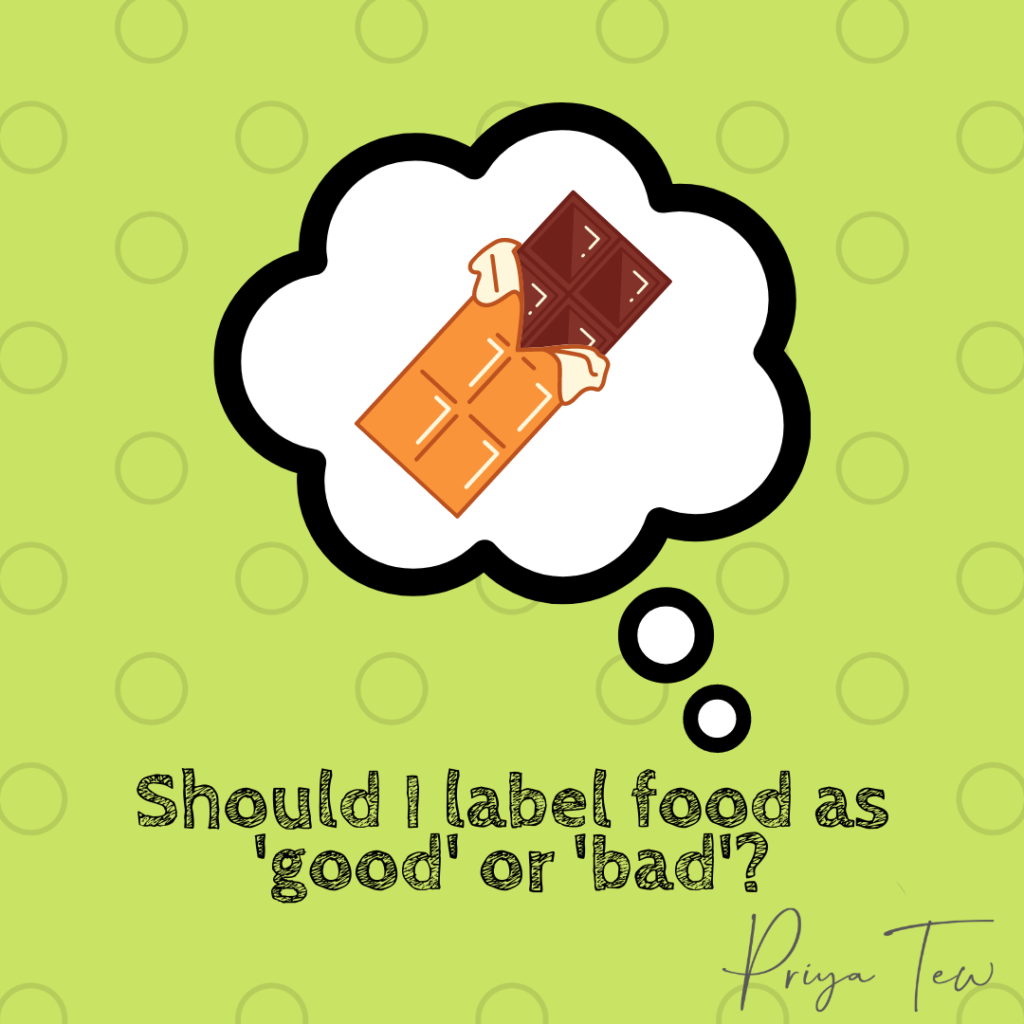Should I label food as ‘good’ or ‘bad’?
Food neutrality is the practice where we look at all foods equally, rather than labelling them as good ✅ or bad ❌. This can be a tough concept to grasp as diet culture is all around us and tells us that there is a food hierarchy. This week has brought news in my own family about healthy eating being taught at school as “fruit is good and chocolate is bad” and I know from my nutrition colleagures that it is happening in other places too. Now whilst nutrition can be complex and there can be a need to simplify it, in my mind this is a vast over-simplification that could lead to long term incorrect assumptions. We know that how we teach children will impact their relationship with food throughout life. So it is key to give out the right messages.

We’ve all heard ourselves or someone we know say we are being ‘naughty’ by eating chocolate, or being ‘good’ for avoiding certain foods. This kind of labelling internalises the message that our food choices reflect who we are and how we are perceived. In reality we all know that eating certain foods cannot make us good or bad people. Our morality and ethics are governed by more than what we put into our mouths. Whilst eating more vegetables is beneficial for our bodies, it is also important to eat a balance of the foods that bring us pleasure and satisfaction too.
It is often the case that the foods that are seen as ‘bad’ will lead to feelings of guilt, naughtiness or shame when they are eated. Sometimes there can be the need to hide away when eating them. They can also become restricted foods, which can lead to the feeling of deprivation, which over time makes you crave the item more. This can make you feel ‘out of control’ when faced with this food. By simply changing our language around food we can begin to see food for what it is: a method to satisfy hunger and provide us with the energy we need each day. This language and role modelling is really important in families and schools.
Instead of calling foods good and bad here are some ideas:
- All foods are good for us but there are some s we eat more often and some we eat less often. You can eat too many carrots or too much cake. Finding the balance is what helps our bodies work well.
- Our bodies need different amounts of different foods groups. More fruit and veggies, plenty of wholegrains and protein, less sugary, high fat foods. All foods are totally fine to eat, it’s about listening to how foods make our bodies feel and what helps us function better.
- What foods give you more energy and help make you feel good during the day?
Remember, nutrition is not black and white. All foods provide us with some nutrition and all foods can be enjoyed within a balanced diet. Often it is not the food that is the problem but our perception and thoughts around it. So I challenge you to challenge your thinking around everyday food this week!
Thanks to Olivia Booker for the image.